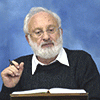It Will Come Gradually
 Question: If I read the text while listening to The Zohar, I cannot concentrate on prayer. What is better: to read or to pray?
Question: If I read the text while listening to The Zohar, I cannot concentrate on prayer. What is better: to read or to pray?
Answer: It is better if you do both, but you cannot accomplish it at once. It takes a long time. It is similar to working with some novel device or entering a new society. Initially, we don’t know anything about them. We start exploring their behavioral patterns and reactions to the environment and eventually analyze the initial data and our impressions; we figure out what impacts this mechanism and what doesn’t.
Gradually, we begin to sense the nuances of the system; we learn how it reacts to external factors. It doesn’t matter whether it is a human society, a family, a person, or a machine. All systems react to external influences.
When we study the upper system: Aba ve Ima, ZON, worlds of BYA, and Atzilut, we gradually start assigning our own properties to them under the influence of the surrounding Light. We can tell the difference between Aba ve Ima (Father and Mother) and ZON, which occupies a position that is lower than Aba ve Ima or the worlds of BYA; we distinguish between right and left lines, and recognize Arich Anpin with its “brain partitions” and “hidden intelligence.”
We begin sensing definitions. It’s as if we know people that belong to a certain group or as if we connect a familiar person with a concrete sensation: pleasant or unpleasant, intimidating or not.
When we get to know The Zohar and other Kabbalistic books, we link Kabbalistic notions of internal and external nature with our own sensations. Thus, we begin to assemble all images into one picture, no matter what we read: a weekly chapter of the Torah, “Study of the Ten Sefirot,” or The Book of Zohar, which is written in an allegorical language. We start collecting all images into one picture.
It’s about the upper system to which we belong and its influence upon us. It doesn’t matter what time and place we are talking about: Egyptian slavery, wandering in the desert (as described in the Torah), shattering of the worlds, or correction described in the “Study of the Ten Sefirot.”
Not only do we start to understand that all sources talk about parallel events, only using different languages; we also begin to connect them to ourselves. First, we thought that everything was outside of us and that some upper system was somewhere else, whereas we are here in this world. But later, our self-vision starts to differ and we recognize that everything is within us and about us. The whole Torah is instruction (Orah) that helps us enter the authentic system in order to avoid the state of unconsciousness and keep us away from the condition of living without any clue of where we really are. This is how a person gradually advances.
When we open The Zohar or any other Kabbalistic book (The Study of the Ten Sefirot, Tanakh, Midrash, or Psalms), it depends only on the person and his in-depth sensation that all these sources speak about him, the Creator, and the buffer that connects them together, that is, the world, humankind, the group, and our teachers, the great Kabbalists, the authors of the books that connect us with spirituality.
Then, it doesn’t matter what “language” we are using and what style we cling to; all that matters is whether we have enough time and a suitable place for authentic actions. We feel that we stand across from the system that facilitates revelation of the Creator to us. This system is both external and internal and the Creator stays inside of it until “Israel” (the people), the Torah, and the Creator connect into one whole as all of us always strove to attain.
It will come gradually.
[67809]
From the 2nd part of the Daily Kabbalah Lesson 1/26/12, The Zohar
Related Material:
Formula For Balance
A Request Form To The Creator
Let The Book Of Zohar Talk About Me







Discussion | Share Feedback | Ask a question